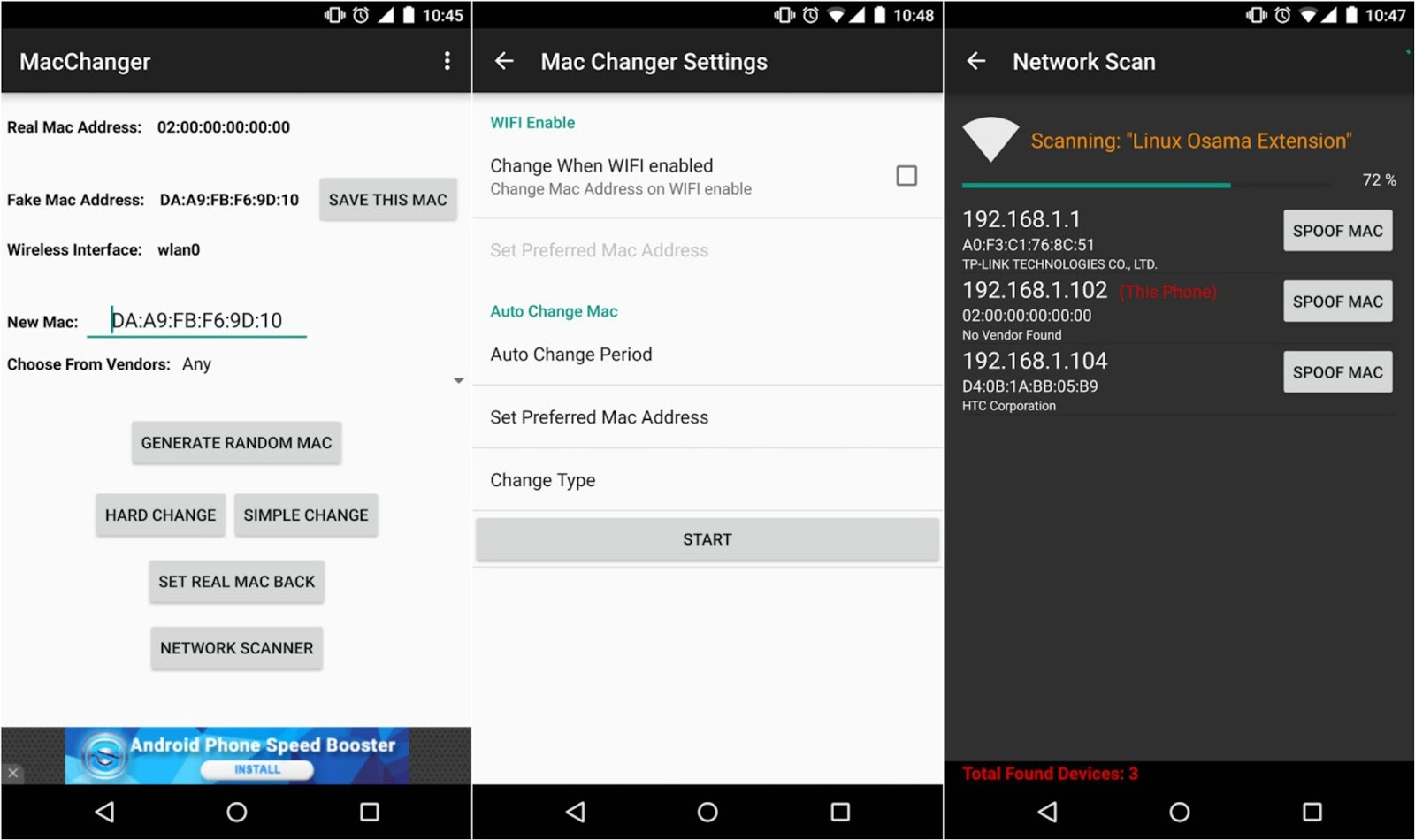
#CHANGE NETWORK ADDRESS ON WIRELESS NETWORK MAC ADDRESS MAC#
Once the sender has retrieved the MAC address of the next hop, he writes that target MAC address into the packet and sends the packet.ĪRP itself is a protocol above ethernet, like IP or IPX. There is a special protocol ARP (address resolution protocol) that is used for that.

Since ethernet uses MAC addresses, the sender needs to get the MAC address of the next hop. Up to now things seem to have gotten worse, because now we have two IP addresses: one is the original IP packet’s target address, the other is the IP of the device to which we should send the packet (the next hop, either the final destination or the router). If x.x.x.x is in the same network, then the destination IP can be reached directly, otherwise the packet needs to be sent to the configured router. When your computer wants to send a packet to some IP address x.x.x.x, then the first check is if the destination address is in the same IP network as the computer itself. Another protocol for example would be IPX.

IP is a protocol that is used on a layer above ethernet. How do IP addresses and MAC addresses work together? There are special MAC addresses, one for example is ff:ff:ff:ff:ff:ff, which is the broadcast address and addresses every network adapter in the network. If the addresses match, the packet is processed, otherwise it is discarded. If a network adapter is receiving a packet, it is comparing the packet’s destination MAC address to the adapter’s own MAC address. Packets that are sent on the ethernet are always coming from a MAC address and sent to a MAC address. Network cards each have a unique MAC address. MAC addresses are the low level basics that make your ethernet based network work. SuperUser contributor Werner Henze offers some insight into the function of the MAC address: That's how your Local Area Network (LAN) uses IP and MAC addresses, and it's important to understand these simple mechanics.Where indeed? What is the specific function of the MAC address? The Answer When this exchange is complete, the router stores the new IP to MAC address relation in its ARP cache for use at a later time. The second computer goes, "Oh, that's me, and here is my MAC address." If your router doesn't know the MAC address, it asks all the devices on the network. If the IP address you are trying to talk to is listed in the table, the router immediately forwards your traffic to the destination. This table holds a mapping of IP addresses to physical MAC addresses. Your router will have an internal table called an ARP cache. When you tell your computer to talk to another device, your computer goes, "Hi, router. Note that each device on the network starts with 192.168.1, and then the router assigned a unique number at the end for each device. Here's an example of the devices on a subnet: So, every device has an IP address that starts with those three octets and then ends with a unique number. It's the default subnet on most residential routers. If yours is like most homes in the world, you probably have a subnet that starts with 192.168.1. You've got an Xbox, iPhone, and a couple of computers. The router connects all your devices to the internet. Let's say you have a house with a router. How MAC Addresses, IP Addresses, and Subnet Masks Work Together A common subnet mask of 255.255.255.0 tells us the first three octets of the address denotes the network portion and the last octet denotes the host portion of the address. These parts are defined by the subnet mask that is assigned to the address. Every IPv4 address has a network portion and a host portion. Some websites always have the same IP address, called a Static IP Address. Years ago, you kept the same IP address on your computer, but now IP addresses are usually dynamically assigned. The IP address is a virtual address and it changes depending on the network your device connects to, or even every time you reboot your computer. (In case you were wondering, the 48-bit identifier has 281.5 trillion combinations, so you shouldn't be worried about duplicates.) Truth be told, we don't usually care about it - it works behind the scenes.

Represented by a 12-digit, hexadecimal number, every device in the world has a unique MAC address.

It's hard-coded to the network card from the manufacturer. Here are all the parts you need to know.Ī MAC address is a device's "physical" address. But most people don't realize there's a lot happening behind the scenes to get you there. What are MAC Addresses, IP Addresses, and Subnet Masks?


 0 kommentar(er)
0 kommentar(er)
